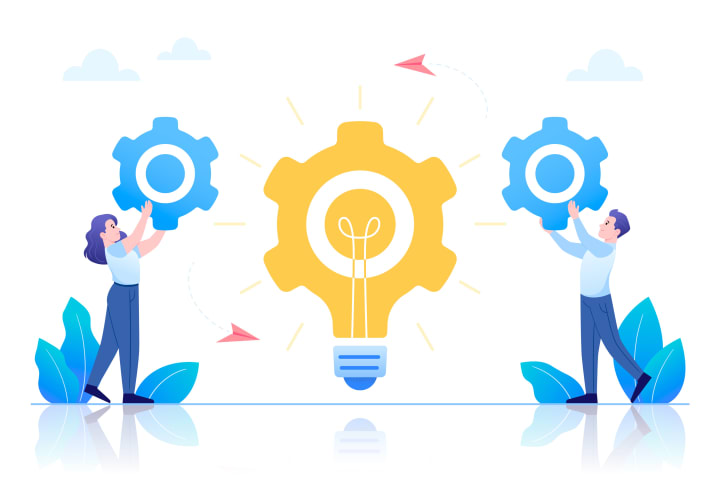Step-by-Step Guide to Effective eLearning Content Development
eLearning Content Development

eLearning has transformed the landscape of education and training, providing flexible, accessible, and engaging learning experiences. At the heart of this transformation is effective eLearning content development. This article explores the fundamental concepts and techniques essential for creating high-quality eLearning content.

Key Concepts in eLearning Content Development
1. Instructional Design
Instructional design is the systematic process of translating general principles of learning and instruction into plans for instructional materials and activities.
- Learning Objectives: Clearly defined goals that outline what learners should know or be able to do after completing a course.
- Instructional Strategies: Methods and techniques used to facilitate learning, such as storytelling, simulations, and problem-based learning.
- Assessment: Tools and methods used to measure learners’ understanding and progress, such as quizzes, tests, and interactive activities.
2. Learning Theories
Understanding different learning theories helps in designing content that meets diverse learner needs.
- Behaviorism: Focuses on observable behaviors and how they’re influenced by stimuli. Used in designing drills and practice exercises.
- Cognitivism: Emphasizes the role of mental processes. Guides the design of content that promotes understanding and retention.
- Constructivism: Suggests learners build their understanding through experiences. Applied in project-based and experiential learning.
3. Learner-Centered Design
Creating content that is tailored to the needs, preferences, and contexts of learners.
- Audience Analysis: Understanding the demographics, prior knowledge, and learning preferences of your target audience.
- Personalization: Customizing learning paths and content to individual learner needs.
- Accessibility: Ensuring content is usable by all learners, including those with disabilities, by following guidelines such as WCAG (Web Content Accessibility Guidelines).
Techniques for Effective eLearning Content Development
1. Content Structuring
Organizing content logically and coherently to facilitate learning.
- Chunking: Breaking down information into smaller, manageable units to enhance understanding and retention.
- Scaffolding: Providing support by building on learners’ prior knowledge and gradually increasing the complexity of content.
- Sequencing: Arranging content in a logical order, from simple to complex or from general to specific.

2. Multimedia Integration
Using various media types to create a rich learning experience.
- Videos: Engaging visual and auditory learners and illustrating complex concepts.
- Animations: Simplifying difficult topics and showing processes or changes over time.
- Graphics: Supporting textual content and making information more digestible and visually appealing.
- Audio: Enhancing learning through narration, music, and sound effects.
3. Interactivity
Incorporating interactive elements to engage learners and enhance learning outcomes.
- Quizzes and Assessments: Providing immediate feedback and reinforcing learning.
- Simulations: Allowing learners to practice skills in a risk-free environment.
- Gamification: Using game elements like points, badges, and leaderboards to motivate learners.
- Branching Scenarios: Creating decision-based learning paths that simulate real-life situations and consequences.
4. Storytelling
Using narrative techniques to make content more relatable and memorable.
- Scenarios: Crafting realistic situations that learners can relate to and learn from.
- Case Studies: Presenting real-world examples to illustrate key concepts and principles.
- Characters and Dialogue: Using characters and conversations to bring content to life and engage learners emotionally.
5. Technical Considerations
Ensuring that content is technically sound and compatible with various platforms and devices.
- Responsive Design: Creating content that adapts to different screen sizes and orientations.
- SCORM and xAPI Compliance: Ensuring content compatibility with Learning Management Systems (LMS) for tracking and reporting.
- Usability Testing: Conducting tests to identify and fix usability issues, ensuring a smooth learning experience.
Best Practices for eLearning Content Development
- Focus on Clarity: Use simple language and clear visuals to convey information.
- Engage Learners: Incorporate interactive elements and real-life applications to keep learners engaged.
- Gather Feedback: Continuously seek and incorporate feedback from learners to improve content.
- Keep it Updated: Regularly update content to ensure it remains relevant and accurate.
- Measure Effectiveness: Use analytics and assessments to measure the effectiveness of your eLearning content and make data-driven improvements.

Conclusion
Effective eLearning content development requires a blend of instructional design, multimedia integration, interactivity, and technical know-how. By understanding and applying the key concepts and techniques outlined in this article, you can create engaging, effective, and accessible eLearning experiences that meet the diverse needs of modern learners. Whether you are new to the field or looking to enhance your skills, these fundamentals will serve as a solid foundation for your eLearning content development endeavors.
About the Creator
Enjoyed the story? Support the Creator.
Subscribe for free to receive all their stories in your feed. You could also pledge your support or give them a one-off tip, letting them know you appreciate their work.





Comments (1)
Keep up the good work Vinay. Loved your work.